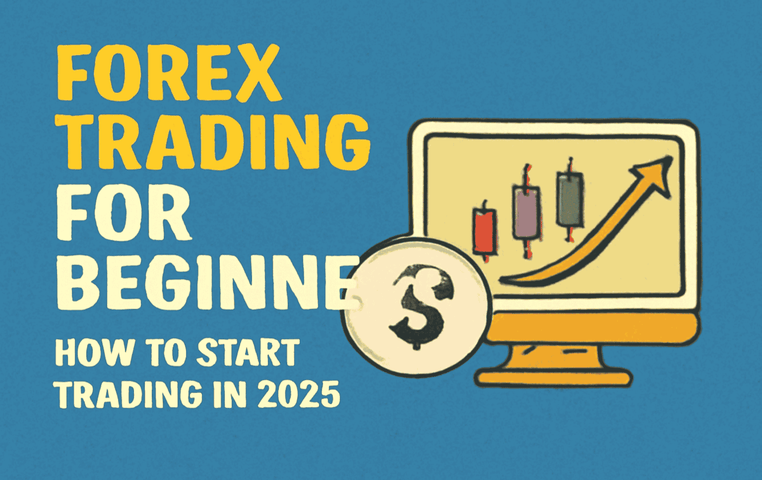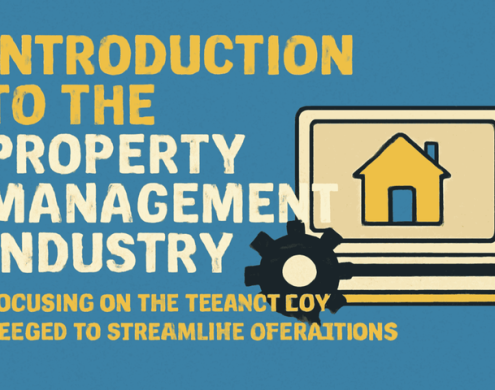Currently Empty: $0.00

How to Start Trading Forex in 2025 for Beginners
Beginning
In 2025, it was easier than ever to get into Forex trading. Thanks to new technology and the rise of online brokers, anyone with an internet connection may now trade currencies. Forex trading for beginners can be really exciting, but it can also be very hard because the market is so complicated and there are so many things that affect currency values. The key to success, whether you want to trade part-time or full-time, is to understand the principles and keep improving your method.
This complete book will explain all you need to know about Forex trading, from how to set up your account and comprehend currency pairs to how to use effective methods. At the end of this post, you will know exactly how to start trading Forex and how to make sure you do well in 2025.
Chapter 1: What Forex Trading Is
What is trading in Forex?
When you trade Forex, you purchase and sell different currencies against each other. The purpose of trading is to make money by taking advantage of changes in the value of one currency compared to another. Forex, which stands for Foreign Exchange, is open all over the world 24 hours a day, five days a week. The Forex market is not centralized like the stock market. Instead, trading happen directly between two people, usually through brokers or dealers.
To put it another way, when you trade Forex, you are betting on whether the value of one currency will go up or down compared to another currency. For instance, you may trade the EUR/USD pair, which means you’re betting on whether the Euro will get stronger or weaker compared to the US Dollar.
The Most Important People in Forex Trading
Central Banks: They determine the rules for how money works and change the value of currencies by changing interest rates and making currency interventions.
Governments: The strength or weakness of a country’s currency can be directly affected by political decisions.
Commercial Banks: They handle most Forex transactions by buying and selling currencies for their customers.
Retail Traders: People who buy and sell little amounts of things and use brokers to get to the market.
Hedge funds and investment firms are big participants that make big trades that can occasionally change how easily the market can buy and sell things.
Why liquidity is important in Forex trading
One of the best things about the Forex market is that it is liquid, which means you may buy or sell an item without making the price change too much. The Forex market is the biggest and most liquid financial market in the world. It has an average daily turnover of $6.6 trillion (as of 2025). This huge amount of liquidity means that spreads are tight, which lets traders get in and out of deals fast and cheaply.
Chapter 2: Starting to Trade Forex in 2025
How to Get Started with Forex Trading in 2025
It’s easier than ever to start trading Forex in 2025. For novices, here’s a step-by-step guide:
Step 1: Pick a Forex broker you can trust
Choosing a trustworthy and registered broker is the first step in starting to trade Forex. A lot of brokers have competitive spreads, trading platforms, educational materials, and customer service. When you choose a broker, be sure they are regulated by important financial bodies like:
For traders in the U.S., the Commodity Futures Trading Commission (CFTC) and the National Futures Association (NFA) are in charge.
The Financial Conduct Authority (FCA) is in charge of UK traders.
For Australian traders, the Australian Securities and Investments Commission (ASIC) is in charge.
IG Group, OANDA, Forex.com, and Interactive Brokers are some of the most well-known brokers.
Step 2: Set up a Forex trading account
After picking a broker, the next thing to do is open a trading account. You will need to give personal information such your name, address, and financial history. Some brokers additionally want you to show confirmation of your identity and where you live. You can add money to your account and start trading once it has been validated.
Step 3: Put money into your trading account
Different brokers have different minimum deposit amounts, however they usually vary from $50 to $500. There are many ways to add money to your account, such as bank transfers, credit cards, and e-wallets like PayPal and Skrill. Be sure you know about any fees for making deposits or withdrawals.
Step 4: Get a trading platform to download
A lot of brokers have a MetaTrader 4 (MT4) or MetaTrader 5 (MT5) platform, which is very popular for Forex trading. These platforms have comprehensive charting tools, real-time price feeds, and the ability to place market orders and keep track of your trades.
It’s vital for newbies to start with a sample account first. You can practice trading with fake money in a demo account, which is a safe way to try out your methods before you trade with real money.
Chapter 3: Making a Plan for Trading Forex
Why You Need a Plan for Forex Trading
A Forex trading plan is very important for your success. It tells you how to do things, what you want to achieve, and how to stay disciplined and focused. These are the things that should be in your trading plan:
Goals: What do you want to achieve with your trading? Are you trading to make money quickly or to expand over time?
How much of your money are you willing to lose on each trade? Most people say you shouldn’t risk more than 1% to 2% of your money on each deal.
Define your trading style: Are you a day trader, a scalper, or a swing trader? Your style will affect how you carry out trades.
Beginners’ Guide to Forex Trading Strategies
Strategy for Following Trends
A trend-following approach means figuring out which way the market is going and making trades that go with it.
How to Use: Use indicators like the Moving Average or Relative Strength Index (RSI) to find the trend and plan your trades around it.
A strategy for range trading
In range trading, you find important support and resistance levels and trade between them.
How to Do It: Use chart patterns, such as horizontal support and resistance lines, to find ranges and trade when prices bounce off these levels.
How to Use Breakout Trading
This method entails finding important price levels where the market could break out of a range, which would mean that the trend is still going.
How, you ask? Find the most important support and resistance levels, and then trade when the price breaks through these levels, carbonating a breakout.
How to Handle Risk in Forex Trading
To stay in Forex trading for a long time, you need to control your risks. To keep your money safe, use these tips:
Stop-Loss Orders: These close a trade automatically when the price reaches a certain level to limit losses.
Position sizing means figuring out how much money you want to put at risk in a trade. Make sure that the size of your position matches how much risk you are willing to take.
Risk-to-Reward Ratio: You should always try to get a risk-to-reward ratio of at least 1:2. This means you risk $1 to make $2, which helps make sure that your winning trades are more than your losing ones.
Chapter 4: Looking at the Forex Market
Different kinds of market analysis
You need to know how to assess the market in order to trade well. There are three main ways to do this:
1. Analysis of the Technical
Technical analysis looks at how prices have changed in the past and how the market has changed. It means using charts and indicators to guess how prices will change in the future.
Main Tools:
Candlestick Patterns: To figure out how the market feels, look for patterns like doji and engulfing.
Moving Averages: Use techniques like Exponential Moving Averages (EMA) to find patterns.
The Relative Strength Index (RSI) tells you if a currency is overbought or oversold.
2. Basic Analysis
The goal of fundamental analysis is to figure out how economic forces affect the pricing of currencies. This includes keeping an eye on economic reports like these:
Interest Rates: Decisions made by central banks about interest rates are a big reason why currencies change.
Employment Data: A country’s currency tends to get stronger when more people are working.
GDP Reports: A currency is frequently stronger when the economy is rising.
3. Analysis of feelings
Sentiment analysis tells you how the market feels. It is based on how traders act as a group, which can occasionally push prices in the opposite direction of what traditional research would imply. Traders look at sentiment indicators and news sentiment to see if the market is likely to keep going in the same direction or turn around.
Chapter 5: Useful Forex Tips for Newbies in 2025
Accepting Market Volatility in 2025
The Forex market is very unstable, and it has become much more so in the last few years. In 2025, big events around the world, like changes in the economy, politics, and technology, are likely to make currency prices even more unstable.
Tip: Always utilize a stop-loss order, even when the market is very volatile.
Tip: Keep an eye on world happenings that could affect your currency pairs. You can use tools like economic calendars to keep track of when new data will be released.
How to Avoid Common Forex Mistakes
Overleveraging: Using too much leverage can make both gains and losses bigger. Use less leverage at first until you get the hang of it.
Chasing Losses: Don’t rush to make up for a loss by making another trade right away. Stick to your plan and don’t let your feelings get in the way of trading.
Learning all the time
The Forex market is always changing, thus the best traders are the ones who keep getting better at what they do. Check your trades often, learn new methods, and stay up to current on market news.
Chapter 6: What Forex Trading Will Be Like in 2025
How technology is changing the future of forex trading
The Forex market has always been renowned for being complicated and hard to get into, but it’s changing quickly as technology improves. In 2025, more and more people are using artificial intelligence (AI) and algorithmic trading, which has a big impact on how trading strategies are formed and carried out.
1. AI and machine learning in Forex trading
Combining AI and machine learning algorithms is one of the most fascinating things happening in Forex trading right now. These technologies let traders build very powerful algorithms that can look at huge volumes of data in real time. AI-driven trading systems can spot trends and price patterns that people might miss. This lets them conduct trades at the best times, which increases profits and lowers the chance of human error.
More and more people are using trading bots that use AI. These bots make decisions in real time based on past data and complex algorithms. They can trade faster and more accurately than any person can. Because so many people like these bots, copy trading platforms have been made where new traders can imitate the methods of more experienced traders.
If you want to use AI technology, you might want to look at automated trading platforms like MetaTrader 4/5’s Expert Advisors (EAs) or third-party bots. But you should always be aware of the risks and test any system extensively with a sample account before going live.
2. Blockchain and trading in foreign currencies
Blockchain technology is also becoming more popular in the Forex sector, along with AI. Blockchain is a decentralized and open ledger system that can help speed up and secure Forex transactions. It cuts out the need for middlemen like banks and clearing institutions, which lowers the cost of transactions and makes the market work better overall.
Bitcoin and Ethereum are two examples of cryptocurrencies that are becoming more important in Forex trading. Traders may now bet on cryptocurrency pairs like BTC/USD or ETH/USD, which lets them make money off of the digital currency market’s ups and downs. As cryptocurrencies become more popular, Forex companies are adding these alternatives to their trading systems.
3. Trading and Social Copy
Traders can follow and mimic the methods of more experienced traders on social trading platforms like eToro and ZuluTrade. Beginners who are still learning the ropes have really taken to this trend. New traders can learn advanced methods without having to learn a lot about market analysis by replicating the transactions of experienced investors.
Tip: Social trading is a great method to learn and maybe even make money, but you should look into the traders you’re copying. Not all traders are the same, and what worked for them in the past may not work for them in the future.
Chapter 7: Mistakes that people often make and how to avoid them
Too much debt
Leverage lets you handle bigger positions with a lower starting investment, which can make both profits and losses bigger. Beginners often want to utilize high leverage because they think it will help them make a lot of money quickly. But this is one of the most typical blunders traders make in Forex.
Tip: Keep in mind that leverage makes risk bigger. If you utilize too much leverage, even a tiny change in the market might cost you a lot of money. When you first start off, it’s best to utilize a leverage ratio of 1:10 or 1:20. As you get more skill and confidence, you may slowly raise it.
Trading with feelings
Keeping your emotions in check is one of the hardest things about Forex trading. There is a lot of uncertainty in trading, and the urge to make quick judgments can lead to big losses. When traders lose money, they frequently trade emotionally, trying to get their money back soon, which can lead to bad decisions.
Tip: Make a trading plan with clear rules on how much risk you’re ready to accept and stick to it to prevent trading with your emotions. It’s also important to take breaks and not trade too much, especially when the market is quite volatile and your emotions can get in the way of your judgment.
Not realizing how important it is to be patient
You can’t get rich quickly by trading forex. The market has a lot of chances, but to be successful in the long run, you need to be patient, disciplined, and keep learning. A lot of new traders strive to earn big profits too early, which usually ends up costing them money.
Tip: Be patient and let your transactions grow. Use stop-loss orders to preserve your money and focus on long-term growth instead of trying to make a lot of money quickly.
Chapter 8: How to Handle Your Money and Build Long-Term Success
Why Capital Management is Important
Managing your money is an important part of Forex trading. One of the biggest reasons why beginners fail in Forex trading is that they don’t manage their money well, especially when they risk too much on one deal. You could lose everything, even if you have a good trading plan, if you put too much of your money at risk in a short amount of time.
Tip: Don’t put more than 1–2% of your total trading money on one trade. This way, you will still have enough money to keep trading even if you lose a lot of money. Using lower position sizes will help you keep your money safe for a long time.
1. Making a Trading Account
When you initially start trading, your main priority should be to keep your money safe and avoid taking risks that aren’t necessary. Instead of only thinking about making money, think about having a steady record of minor wins. With this plan, you may learn from your mistakes and slowly build up your account.
Set realistic goals for how much money you can make. If you want your capital to increase over time, you should aim for a steady 1–2% return each month.
2. Using Ratios of Risk to Reward
To keep your money, you need to be sure that your risk-to-reward ratio is good. A risk-to-reward ratio of at least 1:2 is a good idea for Forex trading. This means that for every $1 you risk, you want to make $2 in profit. This way, even if you lose a transaction, you may still make money on the trades that are doing well and expand your account over time.
Tip: Change your stop-loss and take-profit levels based on your plan and how much risk you can handle. Don’t start a transaction unless you have a clear plan for how to get out.
Chapter 9: Last Thoughts on Forex Trading for Newbies
Is Forex Trading Right for You?
Forex trading can be incredibly profitable, but it’s not for everyone. You need to be dedicated, disciplined, and willing to learn from both your accomplishments and your failures. There are a lot of chances in the market, but keep in mind that success doesn’t happen immediately.
Before you jump into Forex, ask yourself the following:
Are you willing to spend time learning and practicing your skills?
Can you handle the emotional highs and lows that come with trading?
Are you ready to learn from both your setbacks and your wins?
You might want to try Forex trading if you can answer yes to these questions. But always be careful and never risk more than you can afford to lose.
In conclusion
In 2025, there will be plenty of chances for newcomers to study and practice Forex trading. The market is complicated, but anyone can be successful if they have the correct tools, methods, and attitude. Pay attention to learning the basics, being in control of your emotions, and managing your risk. If you follow the steps in this complete tutorial on how to start Forex trading, you can slowly establish a successful trading career.
The Forex market will keep changing, thus it’s important to stay up to date. You can confidently navigate this changing market and reach your long-term goals if you are patient, disciplined, and always learning.
Related Posts





